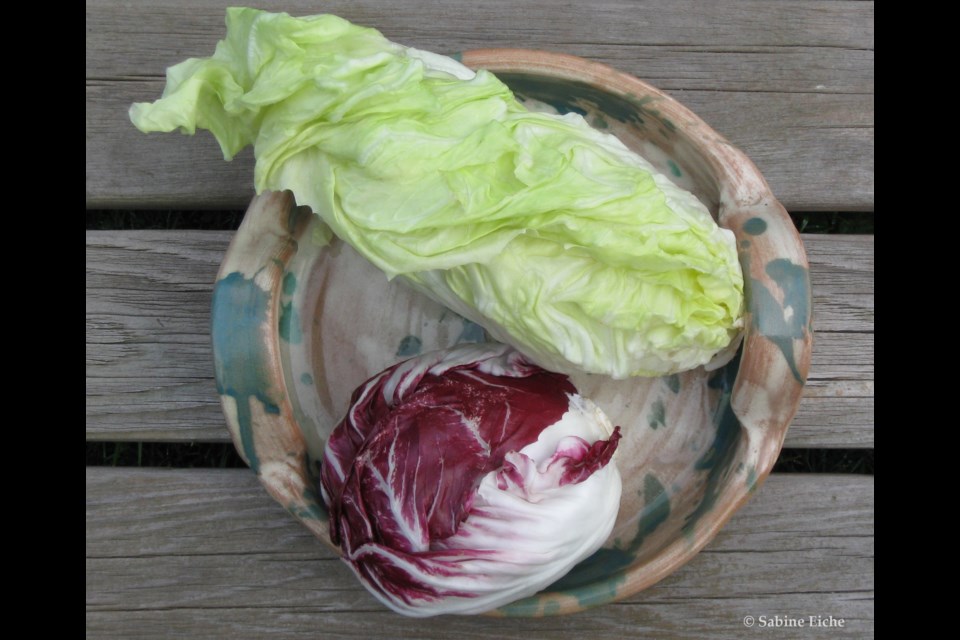Thirty-two years in Italy changed my diet. When I came back to Richmond in 2008, I was surprised and delighted to see that “cavolo nero” – Tuscan kale – had made it to the vegetable gardens of the Pacific Northwest. And now, eleven years later, I’ve encountered another old friend from Italy – radicchio, a member of the chicory family. Our reunion took place a couple of Saturdays ago, November 9, at the Riley Park farmers market, where Vancouver’s Radicchio Festival was in full swing.
The intention of the Radicchio Festival was to introduce locals to a leafy vegetable grown in the colder months of the year, a healthy, versatile and colourful addition to the produce that usually dominates our winter fare. Radicchio’s homeland is northern Italy, which, at 45 degrees latitude, has a climate comparable to that of the Pacific Northwest (49 degrees latitude), making it easy to grow here.
Radicchio’s birthplace is Treviso, a city about 42 kilometres north of Venice. Some historians believe the plant came from the Orient, arriving in Venetian territory in the late 15th century. By the 16th century, it was being cultivated in Treviso. Nonetheless, already the ancients were familiar with a kind of wild chicory with medicinal qualities similar to those of the cultivated radicchio – in the first century AD, the Roman naturalist Pliny the Elder mentioned the plant’s ability to purify the blood and fight insomnia. Today, radicchio is praised because it’s rich in polyphenols including anthocyanins, which have antioxidant effects, and because of its relatively high fibre content, which aids digestion. The same compounds that account for its healthful properties also give radicchio a slightly bitter taste.
The different varieties of radicchio are named after the north Italian cities in which they originated – Treviso, Chioggia, Verona, Castelfranco and Milan. The first three are known as red radicchio because of the deep red colour spread through their leaves; Castelfranco is a variegated radicchio, its greenish-yellow leaves delicately veined with red and white; the green Milan radicchio is grown not in the Veneto region, but in Lombardy – also known as sugarloaf radicchio, it’s the mildest of all.
Radicchio is eaten raw, grilled, baked or cooked. It lends crunchiness and colour to a mixed salad. Use it in a quiche together with potatoes and salmon. Combine it with leeks and bacon as a condiment for pasta. Bake an open-face savoury pie with radicchio and mushroom filling. Radicchio is tasty on pizza. I like to cut it into strips, cooked slowly in a pan with olive oil and a sprinkling of salt, served alongside fish or heaped on to some slices of prosciutto. If you don’t like bitter, a dash of balsamic vinegar as the radicchio is cooking mitigates it.
Several farms in the region grow different radicchio varieties, selling them at the Riley Park farmers market – Cropthorne; Glorious Organics (sells with Organic Farm Connection); and Close to Home Organics (sells with Earth Apple Organic Farm). The Richmond grocer LL Sunshine Farms carries the Chioggia variety.
Sabine Eiche is a writer and art historian



